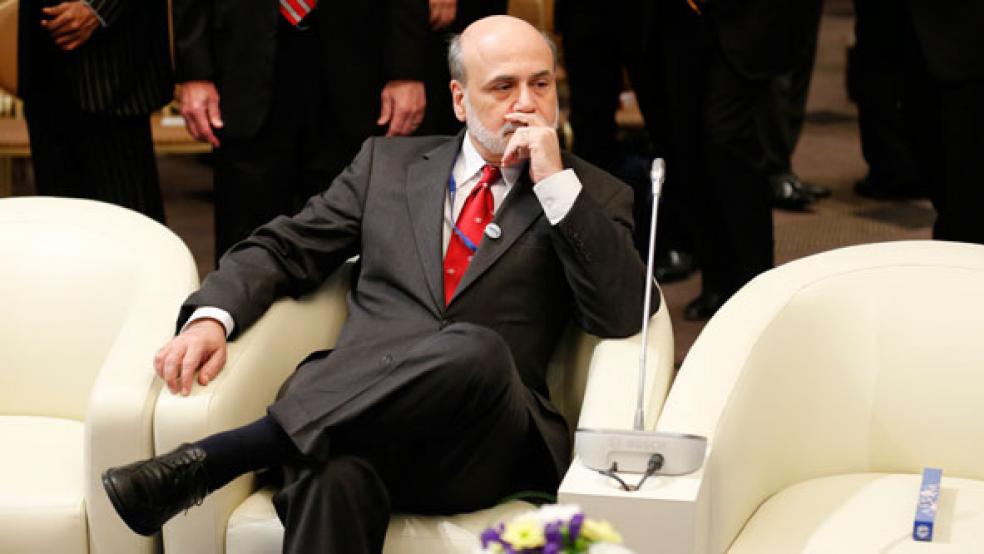The sluggish pace of job creation continues to bedevil monetary policymakers at the Federal Reserve Board, who are coming under pressure to channel their monetary easing efforts into areas other than housing.

The Fed’s Open Market Committee voted Wednesday to continue purchasing mortgage-backed securities at a $40 billion-a-month pace through the end of the year, while keeping interest rates for bank borrowing at the Fed at 0 to ¼ percent at least through mid-2015. The statement, which reflected no change in policy after a two-day meeting, also noted that inflation remained within acceptable bounds, which allows the Fed to continue with its accommodative policies.
The housing market has responded modestly to the low interest rates facilitated by the Fed’s purchases of mortgage-backed securities. With the 30-year fixed-rate mortgage at a historically low 3.37 percent, according to the latest Freddie Mac survey, home starts, new and used home sales and remodeling projects are finally escaping from the depression-like levels that have marked President Obama’s first four years in office.
But with millions of mortgages still underwater and ineligible for refinancing under stringent bank collateral rules, new questions are being raised about how much will be achieved by the Fed’s latest round of bond-buying, which has its biggest impact on the mortgage market. Some Fed critics say it’s time for the nation’s central bank to aim its quantitative easing policies at other troubled sectors – in particular, state and local finance.
“Wouldn’t the Fed get more employment bang for its monetary buck by purchasing state and municipal bonds?” asked three Stanford University law professors, including one former Securities and Exchange Commissioner, in an op-ed in today’s New York Times. Lower borrowing costs for state and local governments would enable them to finance more infrastructure projects and hire back some of the one million government employees who lost their jobs over the past two years – all without raising taxes.
They argued that Fed bond purchases would have a much bigger impact on the municipal bond market than additional mortgage purchases, since its $3.7 trillion in outstanding borrowings is about half the size of the housing finance market. “Every Fed dollar spent in the muni market would absorb a larger percentage of outstanding debt and is likely to have a great effect on reducing the bonds’ interest rates than the same expenditure in the mortgage market,” wrote former SEC commissioner Joseph Grundfest, Mark Lemley and George Triantis. “The greater the effect in reducing borrowing costs in either market, the more powerful the impact on employment is likely to be.”
Market participants said Wednesday that new municipal bonds would see substantial rate reductions if the Fed intervened. Current rates for plain vanilla AAA-rated, 30-year, tax-exempt municipal bonds are about 2.85 percent, which is about the same as 30-year Treasury bonds, whose interest is taxable. “That’s inefficient since municipal bonds are tax exempt,” said Hugh McGuirk, vice president at T. Rowe Price for municipal finance.
Peter Shapiro, managing director of the Swap Financial Group, which advises municipal borrowers, estimated that a major Fed bond purchase could lower muni rates by as much as 50 basis points or one-half percentage point.
However, there are several major hurdles before the Fed could switch gears on its quantitative easing policy. Its governing statute prohibits purchases of state and local bonds with maturities longer than six months. Moreover, a significant proportion of state and local bonds also are not “callable,” that is, they cannot be refinanced until they expire.
In many cases, that is decades away.
Any large-scale purchase of those bonds by the Fed would push up their price by lowering rates in the secondary market. That benefits existing bondholders without providing relief for the issuers.
And then there’s the large number of municipal borrowers who entered into complicated swap contracts tied to variable rate bonds, a product sold by major investment banks like Goldman Sachs. They locked in rates that were well below market rate in the mid-2000s, but are substantially above current rates. Those bonds can’t be refinanced to free up cash to finance new bonds or to hire back workers without paying huge cancellation fees on the swaps, which are now under water.
Singer said an alternative strategy for the Fed to help state and local governments caught in the swaps vise would be to step in and provide the traditional bank letters of credit that enhanced the credit-worthiness of the bonds. Before the financial crisis, bank letters of credit usually added anywhere from 0.1 to 0.2 percentage point to the interest on their bonds. In the wake of the financial crisis, when it spiked to 2 percentage points, it remains at an exorbitant 0.5 to 0.8 percentage points.
“In terms of helping municipalities involved in swaps, (issuing letters of credit) would be the best single thing the Fed could do,” said Singer, whose firm advises municipalities involved in such deals. “You don’t need the Fed to purchase bonds directly.”
McGuirk of T. Rowe Price cautioned that even if the lame duck Congress gave the Fed more freedom to purchase municipal bonds – the legislative path suggested by the Stanford law professors – it might take some time before municipal and state borrowers took advantage of the lower rates. “They’re reacting to austerity the same way you and I are reacting to austerity,” he said. “They don’t want to borrow. If we hit the fiscal cliff and fall back into recession, there will be more uncertainty as to revenue.”




